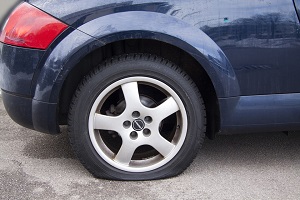Deciding Whether to Fix or Replace Your Tire

Book your tire repair appointment online now
-
Primary Bending Techniques
-
Press Brake Bending:Â Uses a punch and die to create sharp angles or curves, ideal for high-volume production with CNC-controlled accuracy.
-
Roll Bending:Â Shapes metal into smooth curves or cylinders using rotating rollers, common in pipelines, tanks, and architectural elements.
-
Air Bending:Â A versatile method where the sheet is partially pressed into a die, minimizing tooling costs and allowing flexibility for multiple angles.
-
-
Material Adaptations
-
Different metals (e.g., stainless steel, aluminum, copper) require tailored approaches due to varying ductility and springback effects. For example, aluminum may need overbending to compensate for rebound.
-
-
Precision & Tooling
-
CNC press brakes ensure repeatability for tight tolerances (±0.1mm), while specialized dies (e.g., v-dies, gooseneck tools) accommodate unique profiles.
-
-
Applications
-
Widely used in automotive body panels, HVAC ductwork, enclosures for electronics, and structural frameworks in construction.
-
-
Challenges & Solutions
-
Addresses issues like cracking in high-strength alloys (mitigated by heat treatment) or distortion in thin sheets (controlled via incremental bending).
-
-
Innovations
-
Advances include AI-driven bend sequencing, 3D simulation for springback prediction, and hybrid machines combining laser cutting and bending for streamlined workflows.
-
From prototyping to mass production, mastering metal bending ensures efficient, cost-effective fabrication of durable and dimensionally accurate sheet metal parts.
Metal bending, press brake bending, roll bending, air bending, v-die bending, sheet metal forming, CNC bending, steel bending, aluminum bending, radius bending, angle bending, automotive bending, construction bending, industrial fabrication.
Dongguan Shangen Precision Metal Plate Co., Ltd. , https://www.shangenmetal.com
